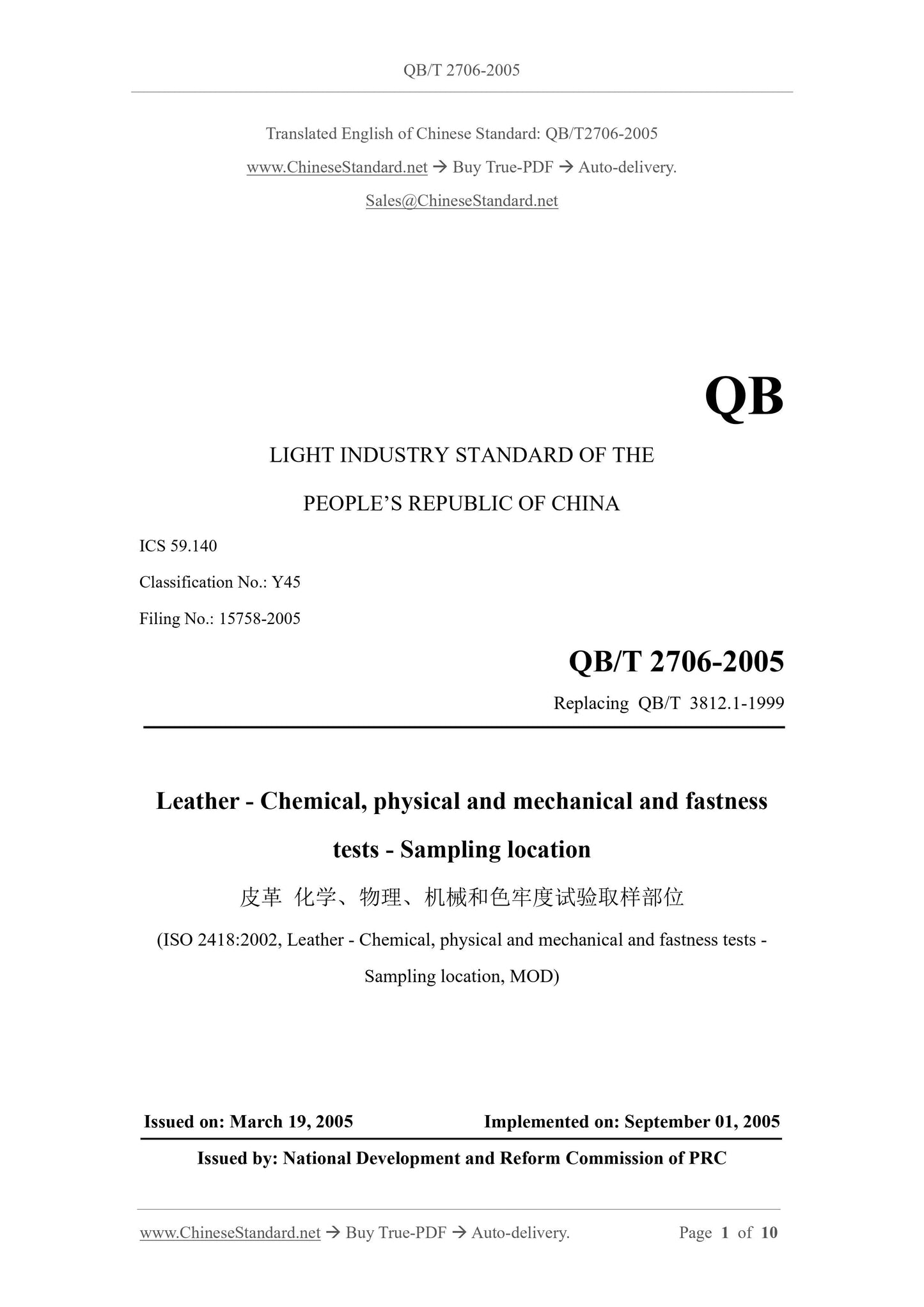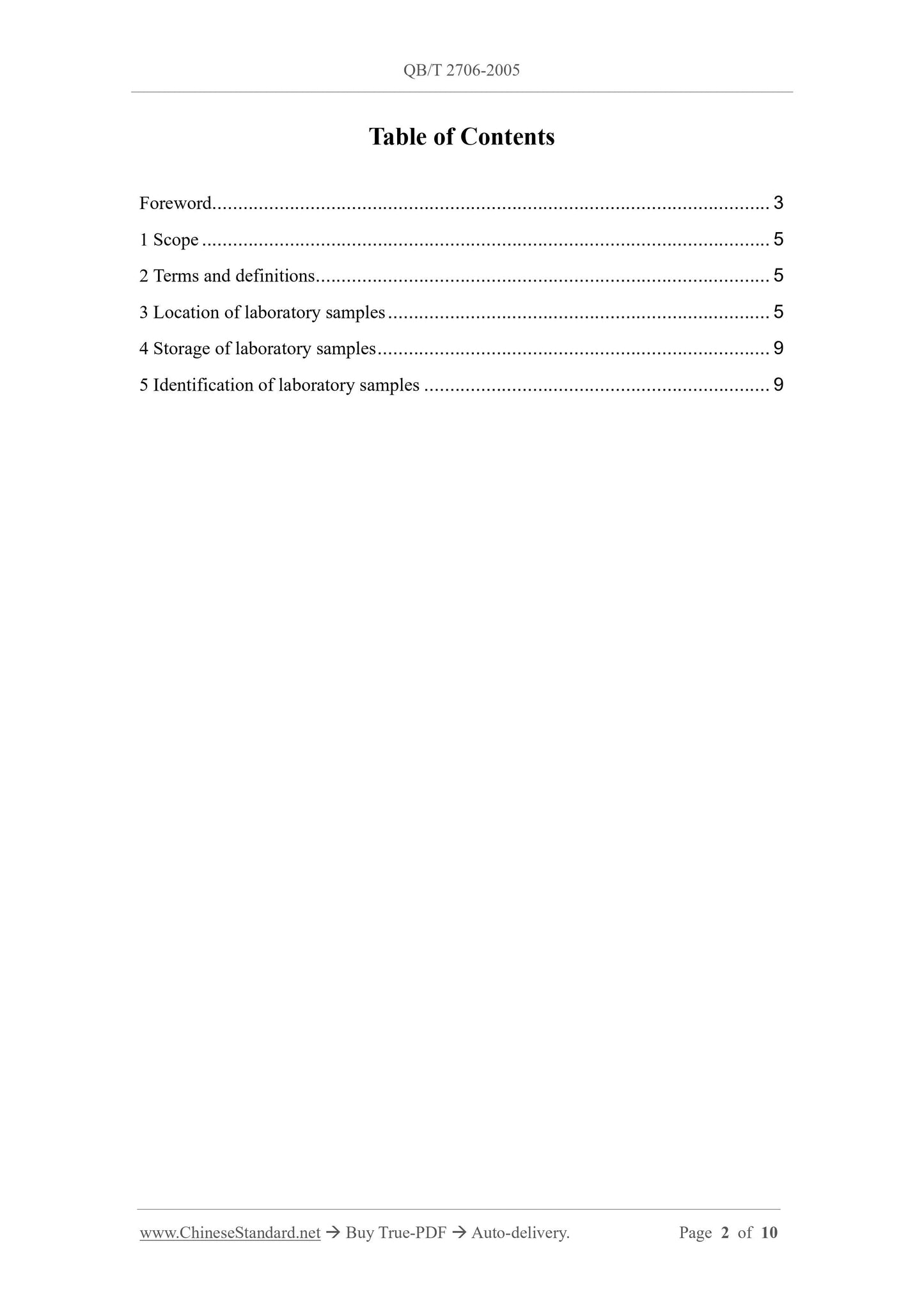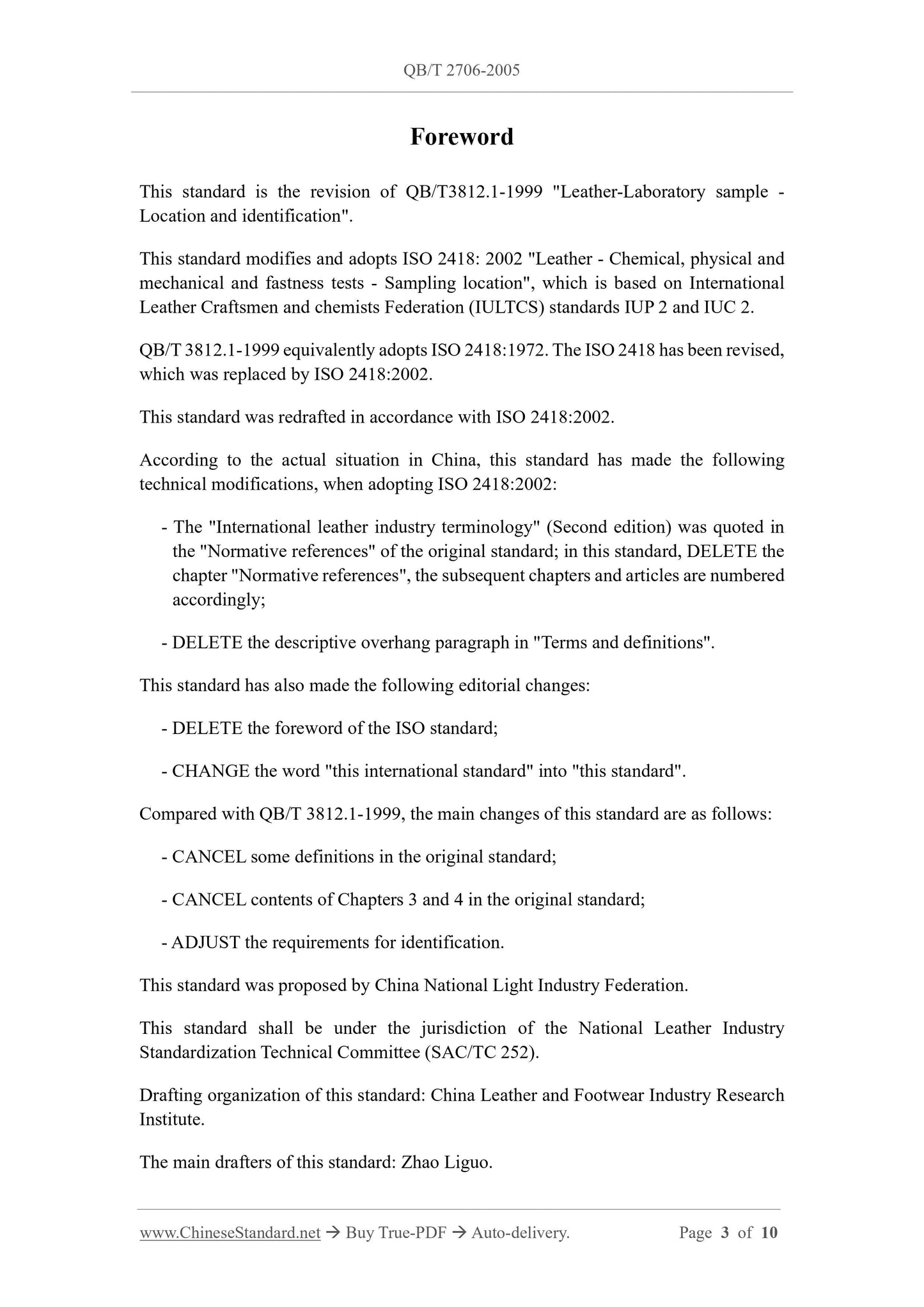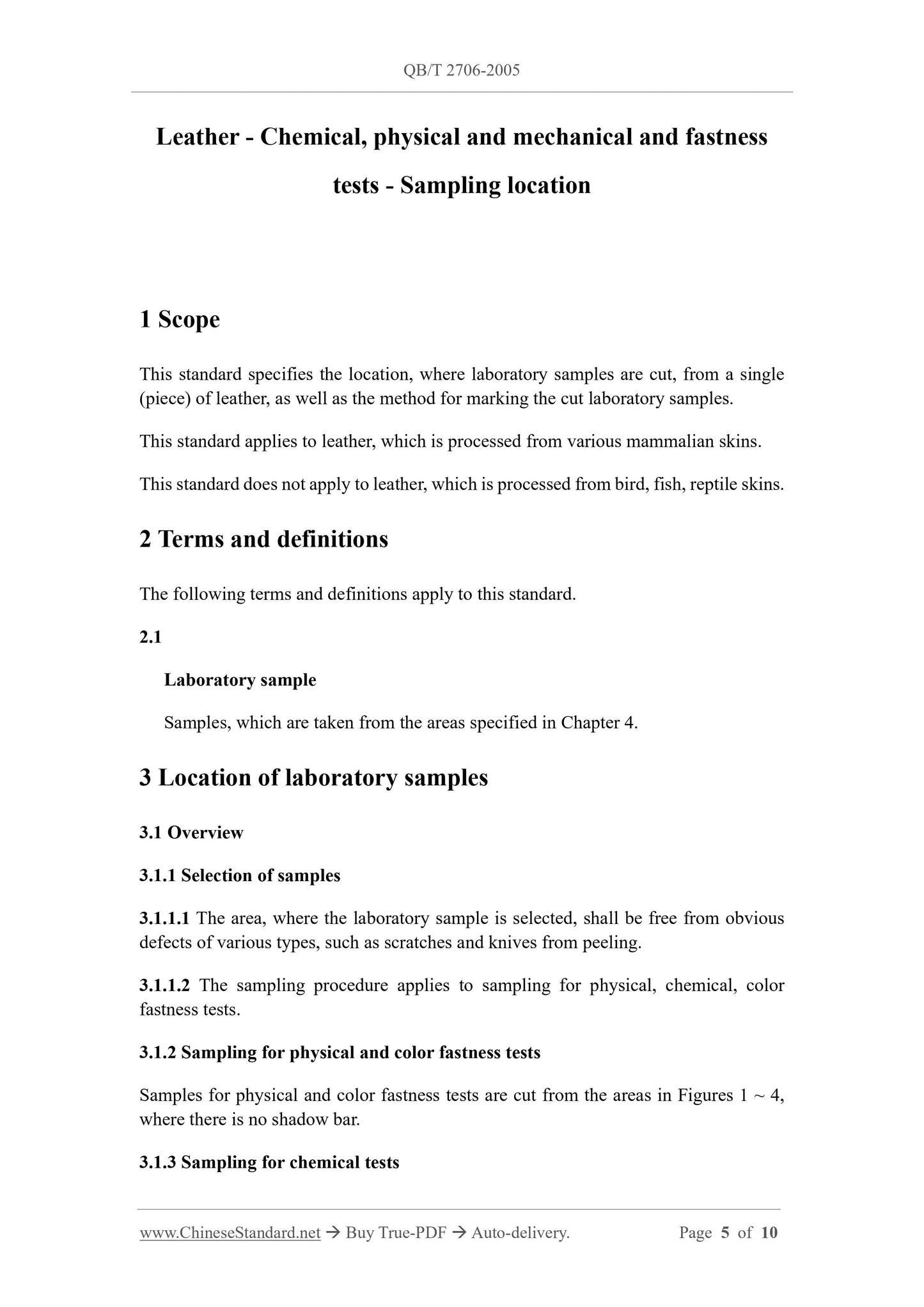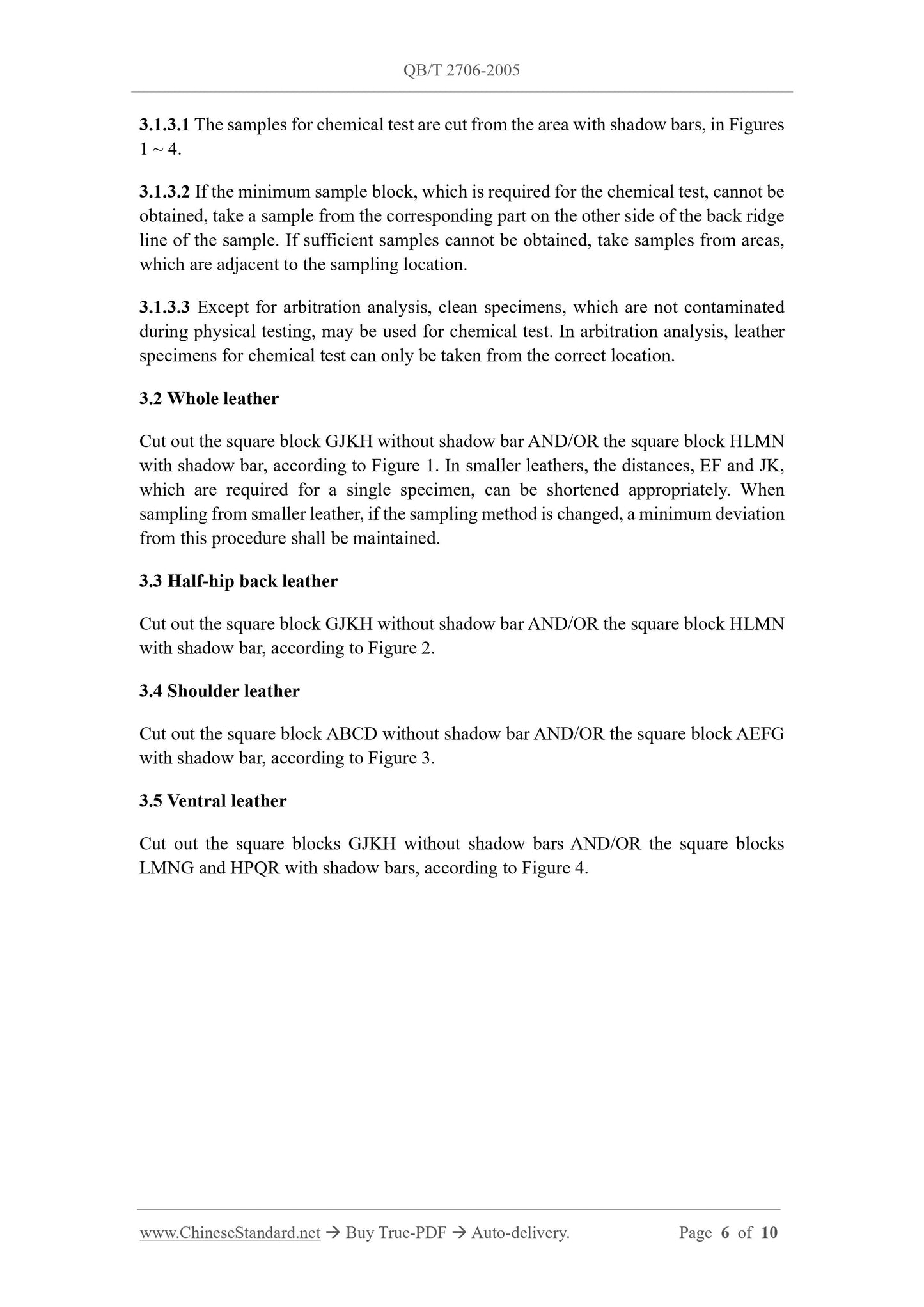1
/
of
5
www.ChineseStandard.us -- Field Test Asia Pte. Ltd.
QB/T 2706-2005 English PDF (QB/T2706-2005)
QB/T 2706-2005 English PDF (QB/T2706-2005)
Regular price
$85.00
Regular price
Sale price
$85.00
Unit price
/
per
Shipping calculated at checkout.
Couldn't load pickup availability
QB/T 2706-2005: Leather. Chemical, physical and mechanical and fastness tests. Sampling location
Delivery: 9 seconds. Download (and Email) true-PDF + Invoice.Get Quotation: Click QB/T 2706-2005 (Self-service in 1-minute)
Newer / historical versions: QB/T 2706-2005
Preview True-PDF
Scope
This standard specifies the location, where laboratory samples are cut, from a single(piece) of leather, as well as the method for marking the cut laboratory samples.
This standard applies to leather, which is processed from various mammalian skins.
This standard does not apply to leather, which is processed from bird, fish, reptile skins.
Basic Data
| Standard ID | QB/T 2706-2005 (QB/T2706-2005) |
| Description (Translated English) | Leather. Chemical, physical and mechanical and fastness tests. Sampling location |
| Sector / Industry | Light Industry Standard (Recommended) |
| Classification of Chinese Standard | Y45 |
| Classification of International Standard | 59.140 |
| Word Count Estimation | 7,780 |
| Date of Issue | 2005-03-19 |
| Date of Implementation | 2005-09-01 |
| Older Standard (superseded by this standard) | QB/T 3812.1-1999 |
| Adopted Standard | ISO 2418-2002; MOD |
| Regulation (derived from) | National Development and Reform Commission Notice No. 10 of 2005 |
| Summary | This standard specifies: from single (piece) laboratory samples cut leather parts, well cut Laboratory sample identification methods, This standard applies to: Use a variety of mammals blues made ??- leather, this standard does not apply with birds, fish and reptiles blues made ??- leather. |
Share
